SFS Suomen Standardit
Toimialayhteisö:
SFS Suomen Standardit
Komitea: ISO/TC 38
(Textiles)
Alkuperä: ISO
Määräpäivä: 2026-03-06
This document provides an environment test to determine the ability of the smart textiles (e.g. electrically heated garment) to withstand rapid changes of ambient temperature.
This document is applicable to jacket, vest, jumper etc., which is including the electrically operating part.
Toimialayhteisö:
SFS Suomen Standardit
Komitea: CEN/TC 223
(Soil improvers and growing media)
Alkuperä: CEN
Määräpäivä: 2026-03-12
This document specifies a method for the enumeration of Escherichia coli (E. coli) in soil improvers and growing media. This document is applicable to material in solid form (including pre-shaped growing media) and liquid form.
This document is applicable to fertilizing product blends, where a blend is a mix of two or more fertilizing products belonging to the categories of fertilizers, liming material, soil improvers, growing media, inhibitors and plant biostimulants, and where soil improvers and/or growing media comprise the highest percentage in the blend by mass or volume, or in the case of liquid form by dry mass. If soil improvers and/or growing media do not comprise the highest percentage in the blend, the European Standard for the highest percentage in the blend applies. In case a blend is composed of fertilising products in equal quantity, the user of the standard decides which standard to apply.
NOTE 1 A soil improver or a growing medium consists of a single bulky (volume-building) component or a mix of bulky (volume-building) components (for example peat, wood fibres, coconut coir, compost, expanded perlite).
Strains of E. coli which do not grow at 44 °C ± 1 °C and, in particular, those that are ß-D-glucuronidase-negative, such as E. coli O157, will not be detected. Some strains of Shigella spp. and Salmonella spp. within the family Enterobacteriaceae can also show ß-D-glucuronidase activity at 44 °C ± 1 °C.
NOTE 2 This method has been validated in an interlaboratory study with specific products that were present on the market during the study (Annex C).
Toimialayhteisö:
SFS Suomen Standardit
Komitea: CEN/TC 223
(Soil improvers and growing media)
Alkuperä: CEN
Määräpäivä: 2026-03-12
This document specifies a method for the enumeration of enterococci in soil improvers and growing media. This document is applicable to material in solid form (including pre-shaped growing media) and liquid form.
This document is applicable to fertilizing product blends, where a blend is a mix of two or more fertilising products belonging to the categories of fertilizers, liming material, soil improvers, growing media, inhibitors and plant biostimulants, and where soil improvers and/or growing media comprise the highest percentage in the blend by mass or volume, or in the case of liquid form by dry mass. If soil improvers and/or growing media do not comprise the highest percentage in the blend, the European Standard for the highest percentage in the blend applies. In case a blend is composed of fertilising products in equal quantity, the user of the standard decides which standard to apply.
NOTE 1 A soil improver or a growing medium consists of a single bulky (volume-building) component or a mix of bulky (volume-building) components (for example peat, wood fibres, coconut coir, compost, expanded perlite).
NOTE 2 This method has been validated in an interlaboratory study with specific products that were present on the market during the study (Annex C).
Toimialayhteisö:
SFS Suomen Standardit
Komitea: CEN/TC 223
(Soil improvers and growing media)
Alkuperä: CEN
Määräpäivä: 2026-03-12
This document specifies a method for the detection of Salmonella spp. in soil improvers and growing media. It is applicable to material in solid form (including pre-shaped growing media) and liquid form.
This document is applicable to fertilizing product blends, where a blend is a mix of two or more fertilizing products belonging to the categories of fertilizers, liming material, soil improvers, growing media, inhibitors and plant biostimulants, and where soil improvers and/or growing media comprise the highest percentage in the blend by mass or volume, or in the case of liquid form by dry mass. If soil improvers and/or growing media do not comprise the highest percentage in the blend, the European Standard for the highest percentage in the blend applies. In case a blend is composed of fertilising products in equal quantity, the user of the standard decides which standard to apply.
Most of the Salmonella serovars are detected with the method described in this document. For the detection of some specific Salmonella serovars (e.g. Salmonella Typhi and Salmonella Paratyphi), additional cultivation steps can be necessary.
NOTE 1 A soil improver or a growing medium consists of a single bulky (volume-building) component or a mix of bulky (volume-building) components (for example peat, wood fibres, coconut coir, compost, expanded perlite).
NOTE 2 This method has been validated in an interlaboratory study with specific products that were present on the market during the study (Annex C).
Toimialayhteisö:
SFS Suomen Standardit
Komitea: ASD-STAN
(Aerospace)
Alkuperä: CEN
Määräpäivä: 2026-03-12
This document specifies the general characteristics, the conditions for qualification, acceptance and quality assurance, as well as the test programs and groups for threaded ring coupling circular connectors, fire resistant, intended for use in a temperature range from -65 °C to 175 °C continuous or 200 °C continuous according to the classes.
